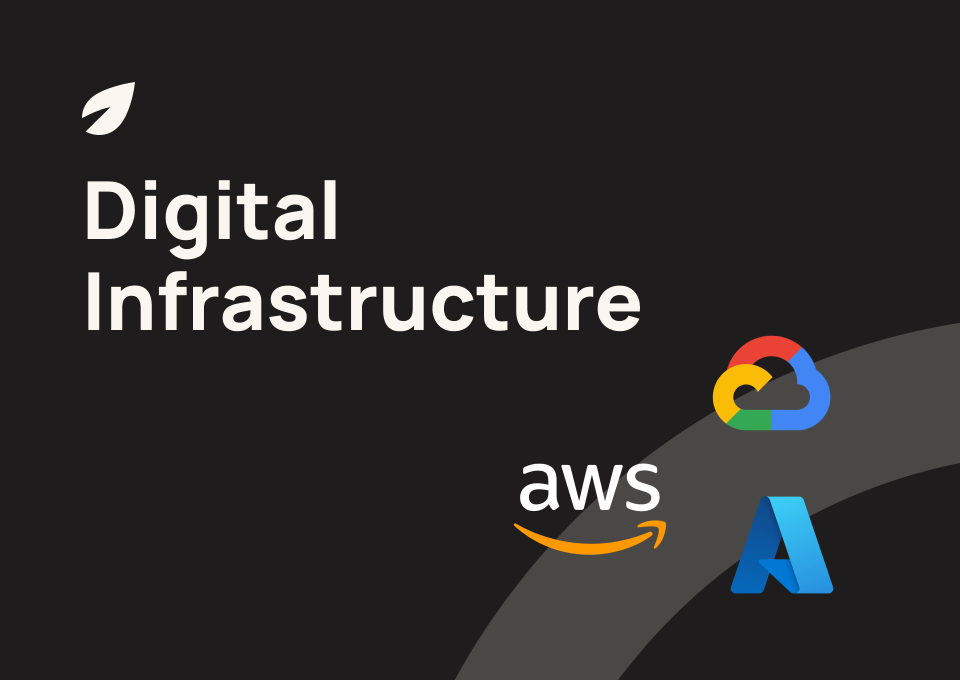Every digital service is powered by electricity. Watching a Youtube-Video, scrolling through your Instagram Feed, booking your vacation on Airbnb - all these activities require electrical energy. The evergrowing usage of these services in return means an increasing demand for electricity. Since this electricity is still largely generated by burning fossil fuels, the aforementioned activities have a significant and growing carbon footprint. Companies that provide digital services therefore have the responsibility to decrease the footprint of their services. But what is the best way to do so?
The solution is Green Energy
Other than the aviation industry, that has not yet found a viable alternative to operating planes on low emissions, the solutions to power our digital lives have been around for decades. Solar, wind, hydro as well as nuclear power are all low carbon energy sources and are well developed technologies that could theoretically be used to power the data centers of our world.
The efficient “Cloud”
In the past decade we saw a paradigm shift in how modern web services are build and run. Instead of deploying their applications on owned or rented servers (on-premise), companies started to use “Cloud” services. You can think of “Cloud” services as shared (virtual) servers, that can be used with great flexibility. Since these cloud servers are shared amongst many companies and often developed by high-tech companies, they reach an energy efficiency, that is 5-6x higher than traditional on-premise services. In terms of your applications’ carbon footprint, this means that it is generally better to run your digital services in the Cloud compared to renting your own servers. However, as long as these data centers don’t run on 100% renewable energy, they do cause significant carbon emissions.
Why green energy is not always as green as we think
A question that often pops up to people who switched their home energy provider to a more ecological tariff is whether or not the electricity that is coming out of their sockets is actually any different now. The truth is that it is not, you are still consuming the same energy that your neighbor is using. It still contains the same energy mix, even though you just purchased “green” energy. Why is that? Well, the truth is that it would not make any sense to transport the physical energy that you purchased to your home. It would basically require separate transportation for “your” electricity. So instead, your energy provider buys green electricity on the energy markets on your behalf. If you want to run your home on actual green energy, the best way to do so is to build up your own little energy park (solar, wind) using your roof or your garden.
The same principle applies to the data center and cloud providers around the world. Many of them claim to operate their data centers in a carbon neutral way, but there are some fundamental differences to what this actually means. From a simplified viewpoint, there are 3 different kinds of climate neutrality for data centers.
Simple Certificates (Stage 1): The cloud provider purchases “Renewable Energy Certificates” (unbundled RECs) to compensate for the amount of “not-green” energy that their data center used. These certificates are traded on an open market and are generally very cheap. They don’t really accelerate the energy transition, since they usually finance existing power plants (low additionality > no replacement of fossil fuel plants).
PPAs (Stage 2): The cloud provider buys not just certificates, but actually purchases the delivery of green energy (PPA’s / bundled RECs) directly from a renewable energy power plant into the local net to compensate for the amount of “not-green” energy that their data center used. In the best case the PPA is financing a new or yet to be build power plant (high additionality), so that the net actually becomes “greener”.
24x7 matching (Stage 3): The cloud provider runs the entire data center 24x7 on actual renewable energy. To do so, the entire local net that the data center is plugged into, has to have a very high share of renewable energy and the PPA’s for local green energy plants have to exceed the electricity used by the data center at any time of the day. This is the holy grail of the “Green Cloud”. There are very few places on earth where this is possible today. Google comes close to this goal with one of it’s data centers in Finland (97% renewable 24x7).
What we recommend
As stated in the beginning of this article, we generally recommend to move your digital services to the cloud and stop operating on-premises servers wherever possible. Naturally you'll ask yourself: to which cloud should we move? The cloud market in the western world is dominated by a few big players, the biggest ones being AWS, Microsoft and Google. Luckily all of them have pledged to achieve climate neutrality for their data centers in the next 10 years. But when having a closer look at their efforts, it becomes clear that they pursue their sustainability goals with different priorities. We therefore advice all digital companies to choose wisely where to host.
Google Cloud (GCP): It is fair to say that Google has been the most ambitious and also most transparent cloud provider when it comes to sustainability. They are climate neutral for all of their data centers worldwide on Stage 2 (purchasing PPA’s) and have been adding many wind and solar plants to nets all over the world (high additionality). Google is the only cloud provider that is committed to reaching 24x7 renewable energy (Stage 3) for all of their data centers and even developed a framework to reach that goal. Since most alternative "green" hosting services are still connected to their local energy net and do not have the efficiency of a big cloud provider, as well as the monetary resources to invest into their own wind- or solarparks, it is very likely that the Google Cloud has a significantly lower footprint than any of these services. Google as well as the other big cloud providers should be criticized for offering their services also to big oil and coal companies, but when it comes to the carbon footprint of their data centers, it must be said that they are doing a great job.
Microsoft Azure: Microsoft committed to very ambitious climate goals over the last years. While they were not as early as Google with starting their climate efforts, they are now investing heavily in turning their cloud green. Microsoft Azure is already today 100% climate neutral (most likely a mix between Stage 1 and 2) and is committed to become carbon negative in 2030.
AWS: From the 3 dominant players in Europe, AWS is the biggest and also slowest to change. Today they can only claim a small part of their worldwide data centers as carbon neutral: These are the EU regions Frankfurt and Irland, as well as Canada and Oregon. All other data centers run roughly on 30-50% renewable energy. AWS committed to reaching 100% climate neutrality until 2030. Since AWS is technically the most advanced cloud provider, many big companies rely on their services and cannot easily switch to a greener competitor. We therefore recommend these companies to move all of their cloud services into the aforementioned green regions of AWS. Even AWS advised their customers during a presentation at a tech conference last year with the statement: "If you want to speed up the transition towards a more sustainable cloud, the first step is to move your services to one of our green regions!"

